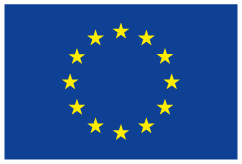Past Consultations
Policy recommendations to implement and/or overcome barriers and enable TSO-ISO integration
All the TSO-DSO coordination schemes that have been assessed within the SmartNet project imagine levels of DSO’s involvement in the System Operation and so of DSO’s responsibility by far larger than what happens today. Thus significant investments in monitoring and control systems and a higher level of expertise on DSO side are required (especially for what concerns smaller DSO).
Evaluation on project results related to a number of models and roadmaps
The main objective of this report is to present the regulatory trends and stakeholders’ position on several issues, which the project considers to be essential for the definition of a well-functioning TSO-DSO interaction. To facilitate this analysis, we have identified 25 main issues, here referred as topics of interest, which are associated with solutions and assumptions implemented in each of the simulator layers. These topics have been evaluated in a comprehensive screening study, based on more than 40 different documents such as position papers, strategies, roadmaps and legislation/regulation (EU Directives, Network guidelines, national regulatory Decisions).
Challenges of Defining Direct or Indirect Control Signals for DERs to Access the Market Directly or Through Aggregators
The purpose of this document is to present an analysis framework for various control signals and market concepts in order to set an appropriate discussion about their advantages and challenges in Pilot B of the SmartNet Project.
Market arbitrage
One of the main goals of SmartNet consists in demonstrating the capabilities of distributed energy resources in providing flexibility. This flexibility is expected to participate (and be eligible to participate) to the various energy markets, as well as the ones in which ancillary services are traded (SmartNet simulation will be focused on the real‑time balancing market).
Ideas and alternatives for the cost-benefit analysis performance
With the results obtained from the simulations, one of the main goals is the elaboration of a CBA methodology for the analysis of TSO-DSO interaction schemes and the assessment of the best TSO-DSO interaction for each national case.
Basic schemes for TSO-DSO coordination and ancillary services provision
Within Smartnet, five models for TSO-DSO coordination are presented. The coordination scheme will determine the operational processes and information exchange between the network operators in the context of the procurement, activation and settlement of different ancillary services (AS) procured by the TSO and local services, procured by the DSO (use cases).
Market Design
The consultation document presents the characteristics of an advanced real-time market aimed at leveraging in an optimal way the flexibility of DERs for different ancillary services and put them in competition with other sources of flexibility, in a level playing field.
Advisory Board Minutes
Advisory Board Meeting (Helsinki, 2 February 2017)
The Project Meeting held in Helsinki in February 2017 hosted a new edition of the Advisory Board. Here, project results were discussed with key European stakeholders with reference to two specific consultation themes (aggregation models and ICT architectures) For more information, you can download the three documents below.
Consultations introductory documents:
Beyond, the Minutes of the Advisory Board meeting provide an idea of the discussions.

